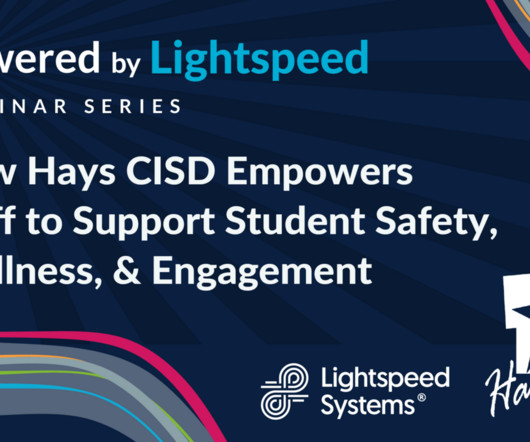Lightspeed Learning Lab – Edtech Best Practices for a Smooth Return to School
Lightspeed Systems
AUGUST 7, 2023
Lightspeed Learning Lab – Edtech Best Practices for a Smooth Return to School You’re working tirelessly to ensure a smooth transition back-to-school and your edtech ecosystem plays a big role. 2:38 We know that the Digital Learning Divide refers to inequitable access to technology and digital resources for learning.














Let's personalize your content